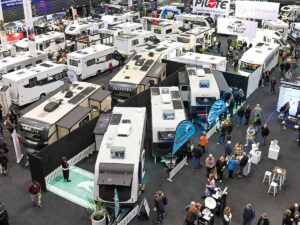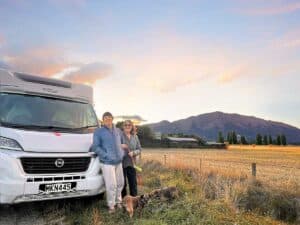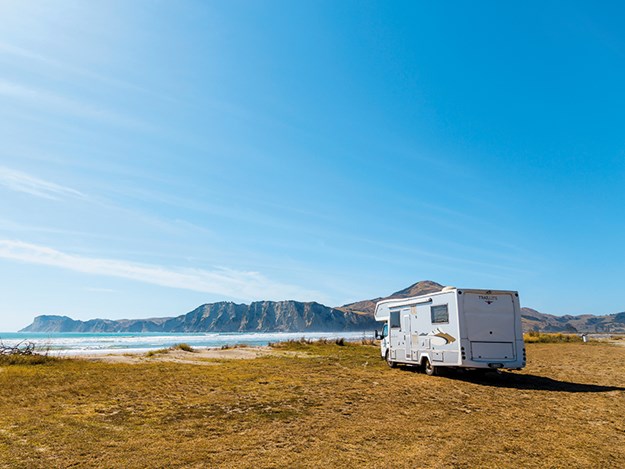 |
|
Traillite feature
|
Peter Newman toured me through the TrailLite workshop at Pukekohe and confessed to a feeling of pride. Well, why wouldn’t he? He is managing director and the man responsible for developing one of the largest and most enduring RV manufacturing companies in New Zealand. It is a title he once could never have envisaged attached to his name any more than he could have anticipated the hurdles he would need to overcome to earn it. The story of TrailLite is one of those can-do tales on which this nation was built when small beginnings balloon into something extraordinary.
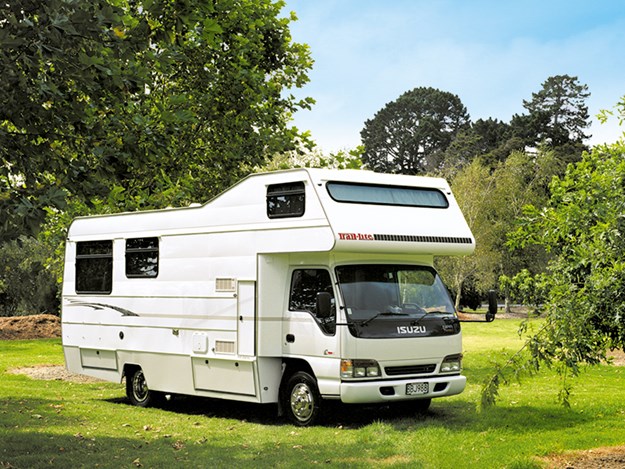 |
|
An early 2000 model TrailLite motorhome
|
From coffins to caravans
Back in 1954 when Peter was still a toddler, two cabinetmakers, Brian Penman and Jim Crotty, were working hard at their furniture and coffin-making business just outside the township of Pukekohe. In that year, Jim decided he would also employ his skills to build a caravan for family holidays. There were a lot of home-built caravans in those days. Jim’s effort was much admired and it wasn’t long before someone urged him to sell it. He did and then built another. That sold too and a new direction for Brian and Jim’s business was on the road.
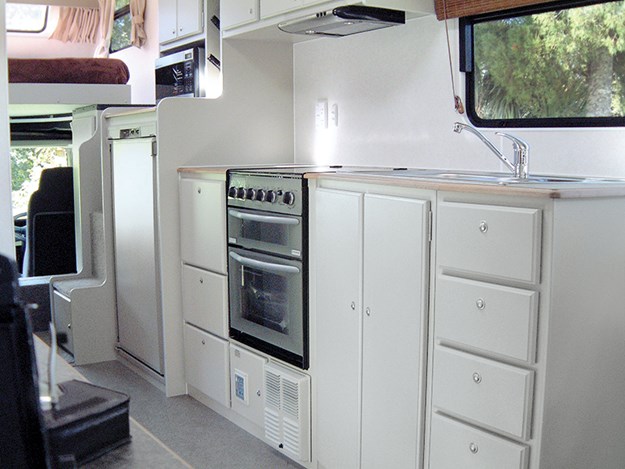 |
|
An early TrailLite model featuring a white interior
|
Today, on the yard at TrailLite’s factory in Pukekohe is a caravan that seems lost among the line-up of modern, gleaming white RVs. Although it has seen better days, it’s an example of the quality of those early caravans. Built in 1956, it was recently unearthed in a Taupo backyard where it had been quietly resting for many years and now awaits restoration. Although facilities were few in those days, anyone can see it has good bones. A long kitchen bench stretches down one wall. The sink is filled from a jerry can with a pump. Two break-down bunks at the back are stuffed with horsehair, and at the front end is a double east-west bed which, by today’s standards, looks like a recipe for insomnia. Cupboards, a Formica table and a full-length wardrobe complete the simple arrangement of furniture.
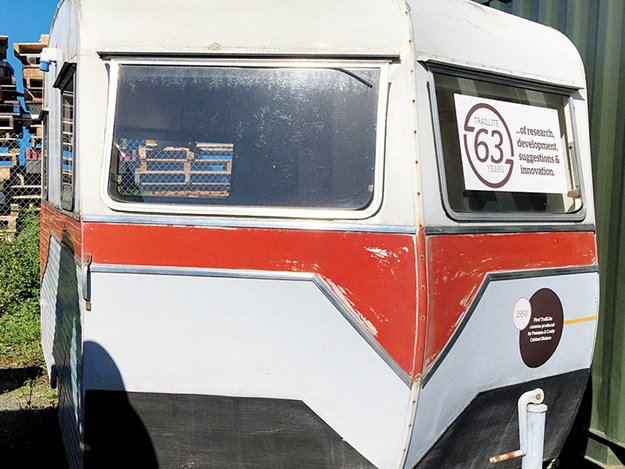 |
|
One of TrailLite’s earliest caravans, built in 1956, is now back home in the company’s yard
|
Time to innovate
Sometime in the 1960s, Brian and Jim sold the business to another cabinetmaker, Bill Kirwin. Bill saw where the caravan market was heading in New Zealand and decided to catch the trend. Then in 1970, he employed an enthusiastic rookie tradesman called Peter Newman.
“At the time Bill hired me, I was 20 years old and I’d just finished my cabinetmaking apprenticeship,” said Peter.
It was a fortuitous move. Through the 1970s, caravan manufacturing in New Zealand was in full swing. Caravans increased in size, and innovative shapes appeared. The levels of luxury and modernisation improved dramatically. Many vans had hot and cold water, electric heaters, full fridges and, in a few, even showers and toilets. Stoves sported grilling ovens and island beds were introduced. Light poured in through windows that had increased in size.
“They were glorious times,” said Peter. “There was plenty of competition but it made little difference. We built to order and dealers were begging us for stock.”
The Muldoon effect
In May 1979, disaster struck. Without warning, the Muldoon government slapped a 20 percent tax on new caravan sales and it all but destroyed the entire caravan manufacturing industry overnight. It never recovered.
Bill Kirwin didn’t recover either. The new ruling soured him. He put the business up for sale and lowered the price. “For me and my soon-to-be partner, Ross Duncan, it became an affordable opportunity,” said Peter.
They bought the company and continued building caravans.
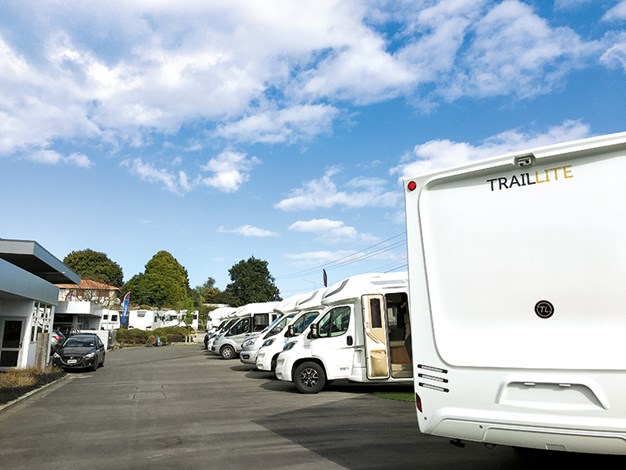 |
|
Part of the modern yard
|
The move to motorhomes
In the early 80s, a customer approached Peter and Ross about building him a motorhome. There weren’t many around in New Zealand at the time, although CI Munro was already building them for their rental fleet.
“After the near demise of the caravan market, we knew that the demand for motorhomes would develop, and so we went ahead and started building them,” said Peter.
“At first, the base vehicles were 5.5-metre CF Bedfords, then later Daihatsus, Toyotas and Mazdas. None of those vehicles had turbo engines and so there was plenty of time for owners to admire the scenery. Those early motorhomes also earned a reputation for cluttering the roads.”
It was hard to find fittings in those days and they had to manufacture a lot of them. The early models were fitted with chemical portable toilets that lived on rails under the wardrobe. They slide out over the shower tray when in use.
Beds were in the cabovers, and the settees in the rear club lounges could also be converted. The motorhomes were purposebuilt for freedom camping, with 160-litre water tanks, gas ovens and Electrolux underbench fridges. This layout was so popular, it was the company’s mainstay for years. Fittings and furniture were in the same dark wood-grain finish as in the caravans. Then a customer came along and wanted a painted interior in white with peach cupboard doors.
“It looked fantastic,” said Peter, “and was a massive step away from wood grains. We built quite a few of them after that and today many of our finishes are lacquered.”
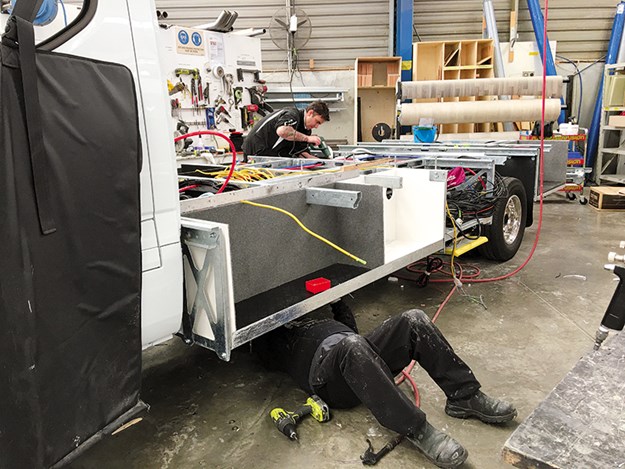 |
|
Wiring being fitted in the second building station
|
Onward and Upward
By the early 90s, TrailLite’s yard had become too small and the company leased a larger space on the other side of town, which is where the factory is today. But in the middle of negotiations, tragedy struck. Ross unexpectedly died. Peter had to push on alone.
“Like any industry, we had our ups and downs over the years,” he said. “It wasn’t an easy ride; recessions came and went, and then in 2008 came the big one when we really had to up our game to keep buoyant.”
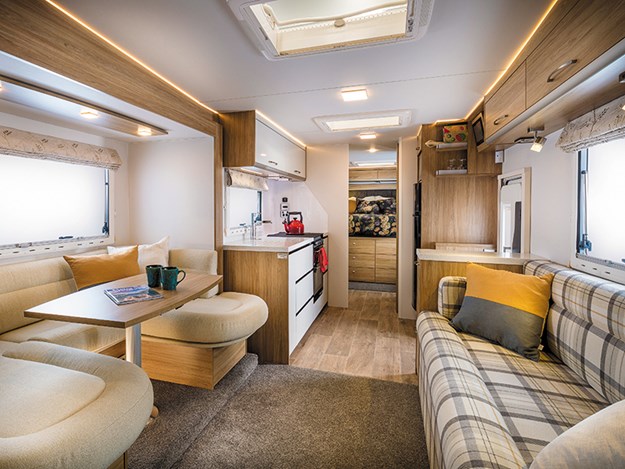 |
|
The designs of modern TrailLite motorhomes are thoughtfully conceived, the fittings and furniture functional and elegant
|
TrailLite motorhomes were redesigned. Walls were constructed with sandwiched foam and fibreglass cladding. New and used imports from Australia, England and Europe had begun to arrive in New Zealand, bringing with them modern living spaces and elegant exterior profiles. Peter recognised that imports would be popular competitors for New Zealand manufactured products. The company began adding imported brands to their bespoke range. It was a smart move. In the past 10 years, European (and other) manufacturers have poured into the country with a bewildering array of possibilities in layout and aesthetics, and clever integration of various features.
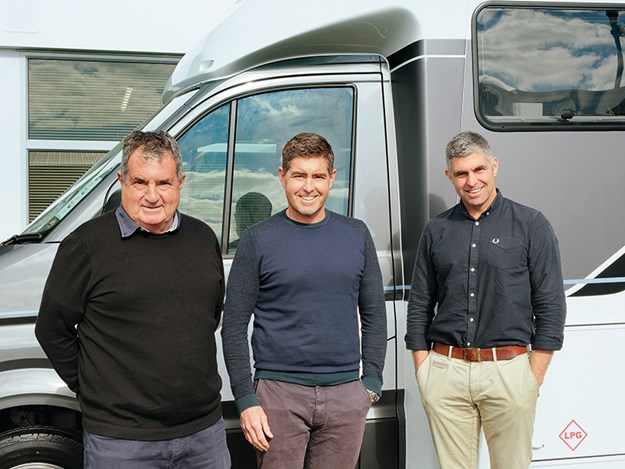 |
|
Peter, Shaun and Adam Newman
|
“We are a small company but with a number-eight wire mentality,” said Peter. “And we were able not only to offer our customers more choice but we also borrowed some European production methods to make our product more competitive. There have been many developments since, not just in design and decor but in our manufacturing methods. Among other things, we’ve built a factory to manufacture our walls and ceilings.”
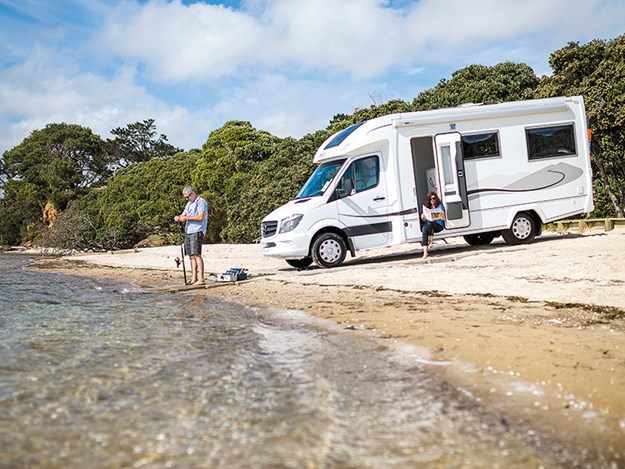 |
|
Some features of the modern models acknowledge Kiwis’ love of freedom camping
|
Looking ahead
Back in the production factory, Peter showed me a TrailLite 300 motorhome.
“I think this is the best motorhome we’ve built to date,” he said. “It’s a complete redesign, not just in layout but also in engineering and the way it is produced. Everything is designed by computer these days. This allows us to know exactly how any motorhome is going to turn out before we even start the build.”
The company is making a big investment in design and methods of manufacture that make for an easier build, lighter weight while maintaining strength, and a cut-back in lead time without sacrificing quality.
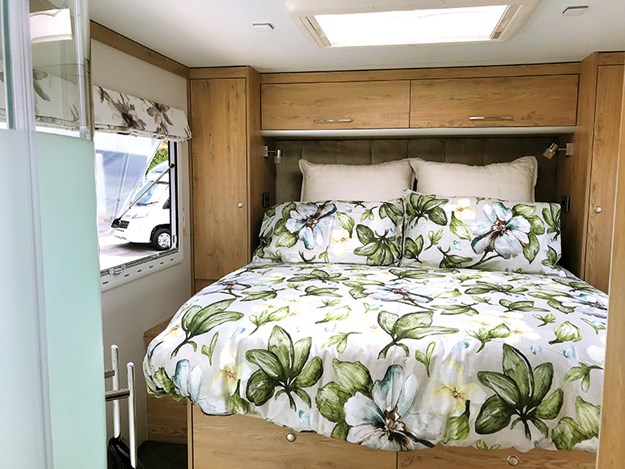 |
|
North-south island beds are popular
|
On an Iveco base vehicle, the embryo of a 700 series was having a 400-litre water tank and waste tanks fitted, on a bolted, galvanised and laser-cut chassis. “New Zealanders take freedom camping seriously so we install large water tanks, a generous bench area and plenty of storage,” Peter explained.
At the next station, another TrailLite 300 was undergoing wiring and plumbing. Next, the furniture and walls would be fitted and finally, the roof and ceiling would be attached from a specifically constructed mezzanine floor. It was all rather impressive.
Peter is now passing on all the daily running to his two sons, Adam and Shaun, who had had little interest in their father’s company when they were growing up.
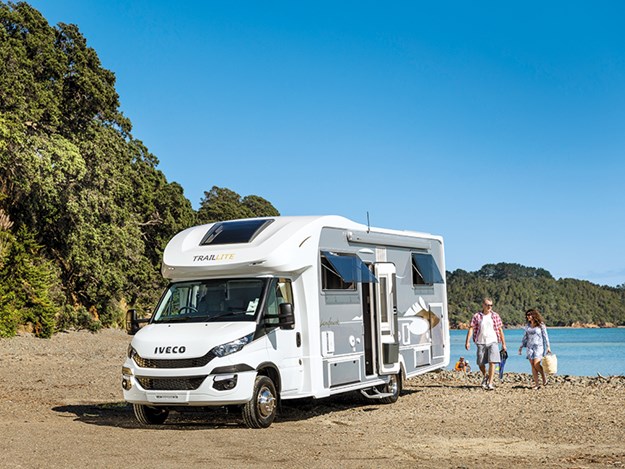 |
|
A TrailLite 500 series model
|
“The only time they came to the factory was when they swept the floor for pocket money,” Peter said. Shaun is now the general manager, Adam is the operations manager, and their enthusiasm for the future of the company was evident.
“It’s a great industry to be part of,” said Shaun, “because we make people’s dreams come true. And the research and development we’re currently undertaking is part of the fun.”
At a time when many industries are beginning to struggle, it was uplifting to come across a company that has overcome many trials and tribulations in the 66 years of its existence and today is responding to the new challenges and looking forward to a bright future.
Find motorhomes, caravans and RVs for sale in NZ

